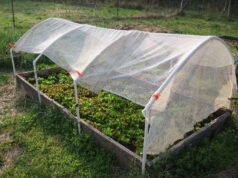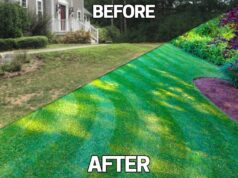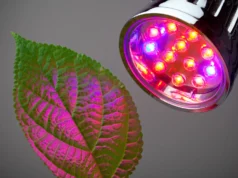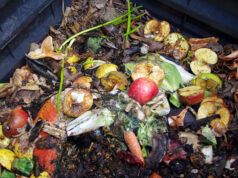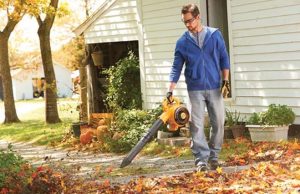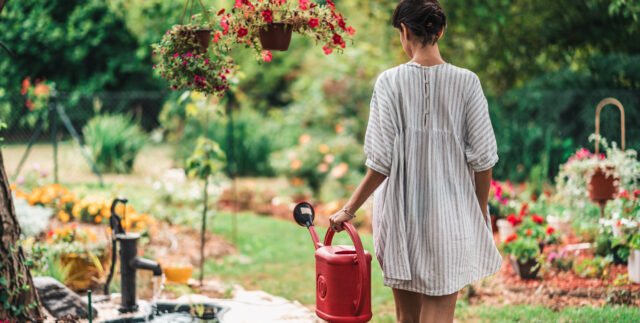
Urban gardeners walk a fine line. On one hand, they are motivated to grow lush tomatoes, dahlias the size of dinner plates, or perennials that come back year after year. On the other hand, there’s a water shortage in many areas of the country and no one likes a high water bill.
Water is a valuable resource and, as of late, a limited one. Lake levels are diminishing, wetland habitats are at risk of extinction, and droughts are rampant. State-of-emergency proclamations have been made to help curb drought in California, Oregon, Washington, Utah and South Dakota. So, how can a homeowner save water while reaping the rewards of their urban garden?
The good news is that city gardeners can still have sensational gardens, all the while saving water, time and money. Take note of these water-saving tips for your next garden project.
1. Select Native Plants
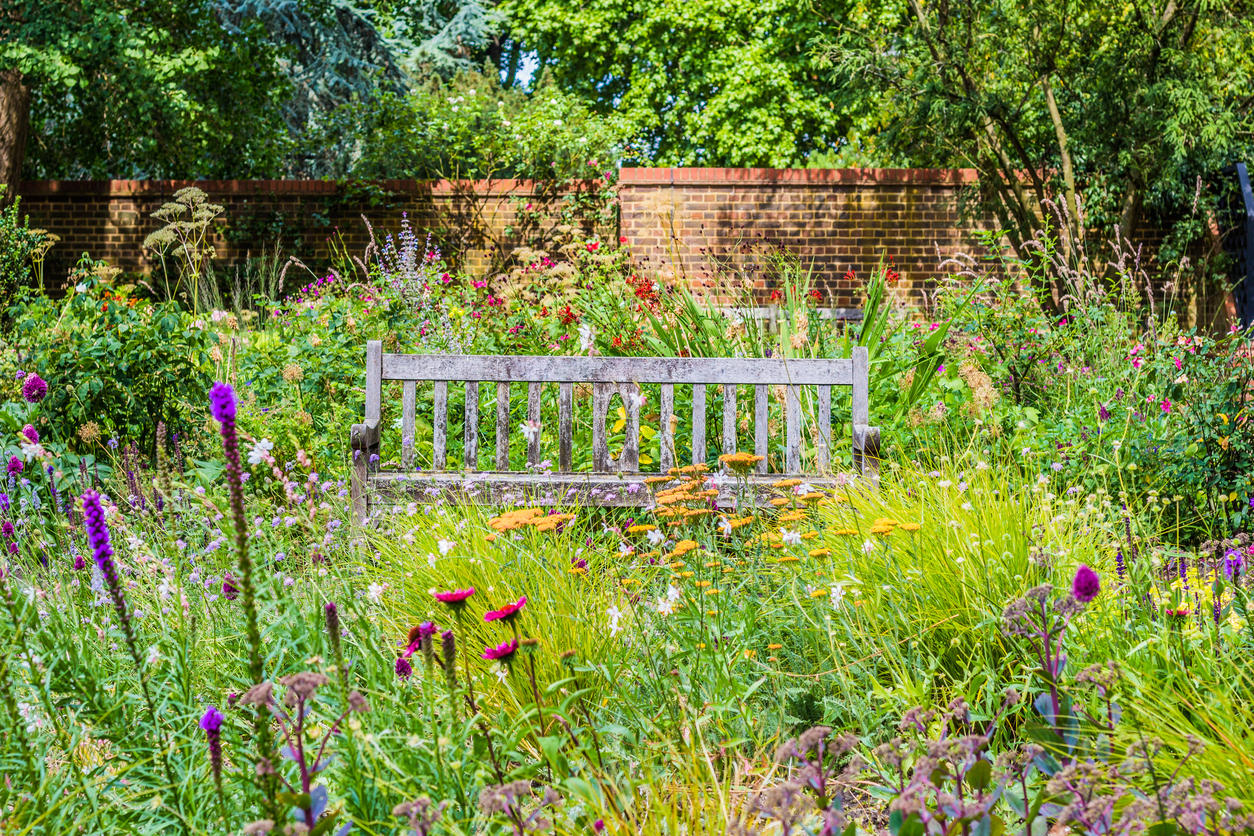
Plants native to your region can thrive happily without much effort on your part. Think Prickly Pear in a Southwest desert, Lady Ferns in a Northwest forest, Indian Paintbrush in the Rocky Mountains, Switchgrass in the Midwest prairies, the Wild Anemones in the Northeast and the Southern Magnolia. No-fuss native plants use as much water as the region provides in rainfall, so there’s no need for additional water to grow, flower, prosper, reseed and spread.
2. Start With Healthy Soil
Nutrient-rich soil is the best ammunition to produce a bountiful urban garden. Even if a garden plot is blessed with ideal sunlight, temperature and water, no plant will thrive unless it has healthy soil to boost its root system. Before the beginning of each season, amend your garden soil with a blend of organic compost and mulch to ensure optimal nutrition, water retention, drainage and root growth. High-quality soil, mulch and fertilizers are easy to find at local farm and garden supply centers like IFACountryStores.
Compost vs. Mulch
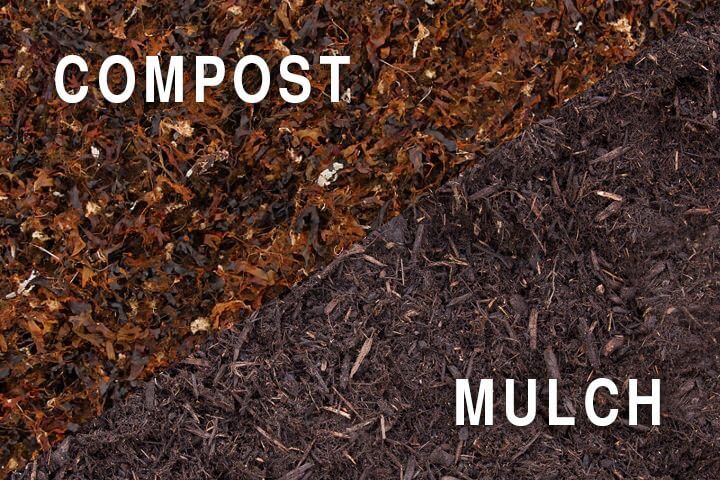
The difference between compost and mulch is small, but important. In general, both compost and mulch blend together organic materials, including wood chips, manure, and leaves. Where they differ is their composition — compost has decomposed while mulch is usually raw. Mulches make a pretty-to-the-eye top dressing, while compost works best as a soil amendment to prepare your garden.
3. Include Drought-Tolerant Plants
Harsh drought conditions, especially during the summer, subject some western climates to low rainfall. Drought-tolerant gardens initially got a bad reputation for their lack of color, sharp shapes and haphazard layouts, but this is no longer the case. Nowadays, design-savvy urban gardeners elevate their Waterwise garden game with variety in color (blue salvia and red penstemons), texture (fountain and reed grass) and sculptural elements (barrel and columnar cactus).
4. Plan a Strategic Layout
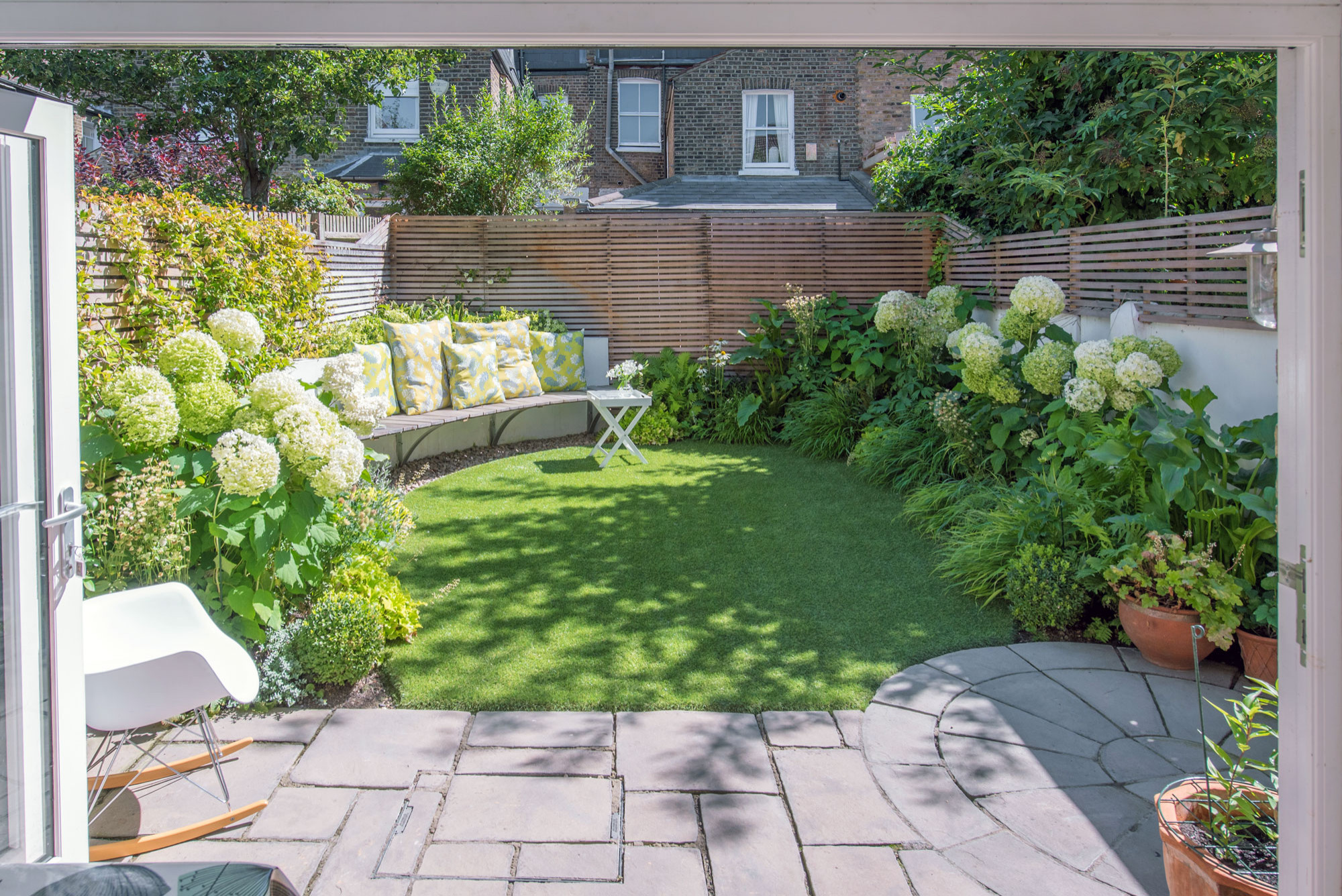
The structure of an urban garden layout can also save water. While vast plots of farmland typically showcase neat rows of produce, smaller gardens benefit from produce being planted tightly in blocks. Plants growing next to each other suppress weeds and slow water evaporation. Additionally, planting in blocks (maximum of three feet) instead of rows provides more efficient watering.
5. Ditch the Lawn
This one is a hard pill to swallow for many gardeners. A lush, green lawn became a staple of the American dream home starting in the 1950s suburbs but has continued to be a status symbol in city neighborhoods, too. In an article titled “The American Obsession of Lawns,” the Scientific American reports, “Lawns are indicative of success; they are a physical manifestation of the American Dream of homeownership…A properly maintained lawn tells others you are a good neighbor.” But because lawns require abundant watering (not to mention fertilizing, aerating, and weekly mowing and edging), consider swapping out that grass for ground cover, permeable hardscaping or outdoor living space.
Groundcovers
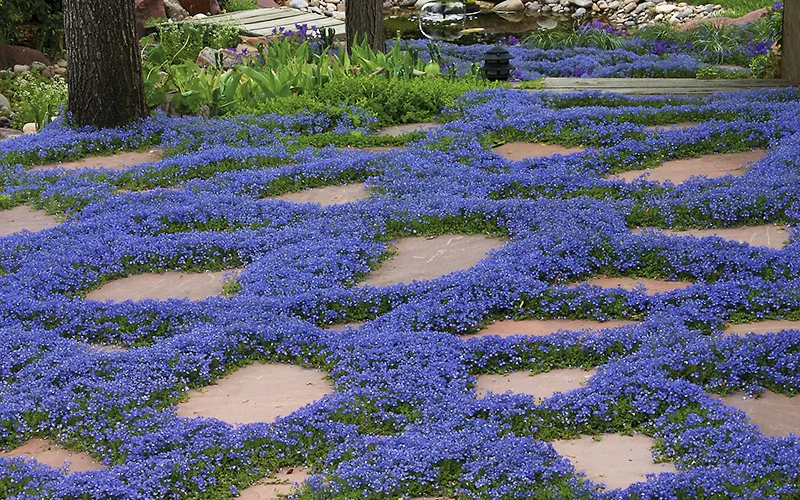
Groundcovers offer up many rewards. Not only does groundcover save water over having a lawn, it can help prevent erosion, grow in hard-to-plant nooks and crannies (think rock walls and stone paths), and spread without maintenance. Some groundcovers, including Voodoo sedum, thrive in the desert sun and cold winters and are tolerant of deer and rabbit invaders. Other groundcovers including Epimedium and Sweet woodruff prefer damp shady spots, even under tall trees.
Permeable Hardscaping
Unlike a thirsty lawn, a permeable hardscape does not require any water maintenance. The difference between an impermeable hardscape, i.e. concrete, and a permeable one is that a permeable surface allows rainwater to soak into the ground, instead of causing damage by puddling, flooding, causing mold or mildew, or attracting unsavory insects like mosquitoes. Decomposed granite, flagstone, and permeable pavers offer up many options for pathways and patios.
Outdoor Living Spaces
Sure, lawns look pretty, but swapping out the turf for an outdoor living space is a major water saver, especially if using permeable hardscaping. While some climates allow for year-round outdoor living, just about all climates offer several weeks of outside patio life. Options are endless for Waterwise outside living — dining, lounging, hammocking, barbecuing, horseshoeing, cornholing, and more.
6. Collect Rainwater
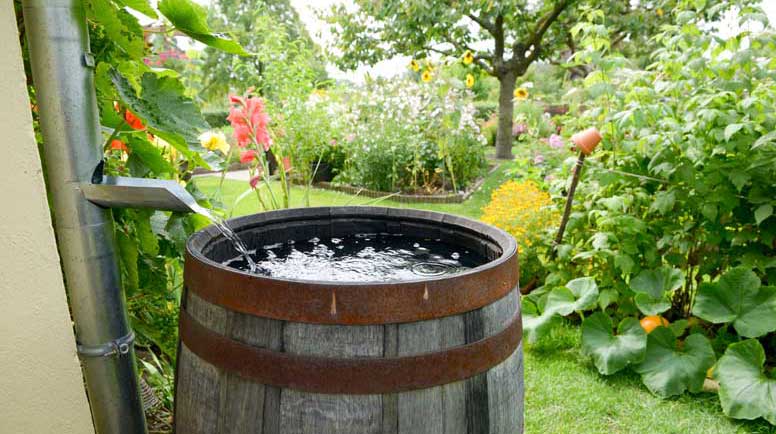
Collecting rainwater is easier than one might think. Only recently have brick-and-mortar stores and online home marketplaces begun to sell these water-harvesting receptacles at attainable price points and in urban-garden sizes. Placed at the bottom of a home’s downspout, rain barrels and cisterns collect and store water from the rooftop, then reuse it to water at a later time. It’s only a matter of time before this practice proliferates throughout neighborhoods in order to save water and money.
7. Rethink Irrigation
Any gardener worth their spray nozzle knows that a watering routine is never a one-and-done act. Irrigation requires constant evaluation and adjustment — sprinklers need repair, rain requires a sprinkling break, August crops need more water than they do in May. It’s a constant battle, but here are some irrigation tips that can help.
Adjust Watering Schedule
Day or night? How long? How often? Opinions differ vastly on this, but your best bet is to head online to your own state, city or region utility site — then check in regularly during the growing season as temperatures and waterfall change. These government agencies publish recommended watering schedules specific to their climate. Also, nearby colleges and universities with agricultural programs often offer that information on their sites, as well.
Install Drip Irrigation
Gardeners likely have a love-hate relationship with sprinklers. Of course, convenience outweighs the water loss that happens with evaporation and not being able to target root systems of fledgling plants. That’s where drip tape or drip lines can help. Attached to a sprinkling valve, these strips distribute water evenly along the ground, so it directly hits the young roots systems.
Use a Soaker Hose
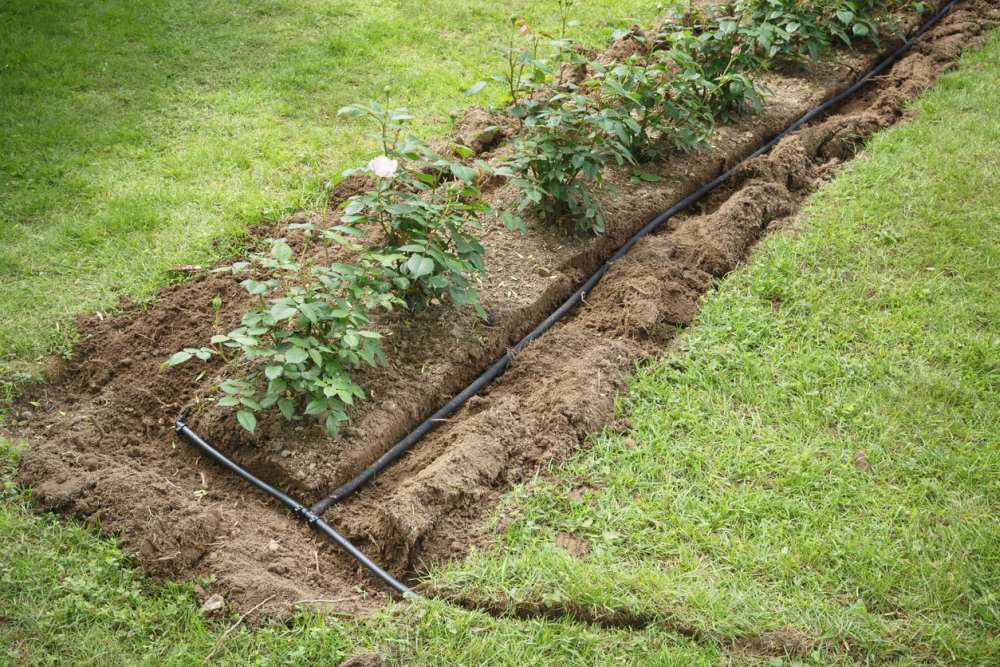
Soaker hoses offer the same benefits as drip systems, but instead of being attached to the sprinkling system (and therefore a more labor-intensive setup upfront), soakers are easily attached to a hose spigot. However, the ease ends after initiation, because it then requires manually turning on and off, unless you install a timer or controller to monitor rain and soil moisture.


